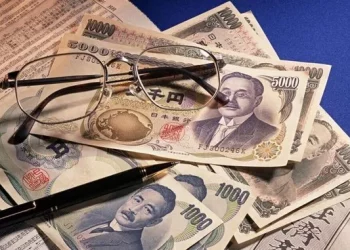The 1958 10 yen coin is a noteworthy piece in the realm of numismatics, particularly within Japanese currency history. This coin, minted during a period of economic and political transition in Japan, represents more than just a monetary denomination; it encapsulates a moment in time and offers insights into Japan’s economic trajectory and numismatic evolution. This article provides a comprehensive analysis of the 1958 10 yen coin, exploring its historical context, design features, economic significance, and its place in the world of coin collecting.
Historical Context of the 1958 10 Yen Coin
Post-War Japan and Economic Recovery
The 1950s were a transformative period for Japan, marked by significant economic recovery and growth following World War II. The country experienced rapid industrialization and modernization, laying the groundwork for its future economic success. During this period, Japan’s government undertook various measures to stabilize and strengthen its economy, including reforms in currency and monetary policy.
The 1958 10 yen coin was minted during this period of reconstruction and economic rejuvenation. Its introduction reflects Japan’s efforts to modernize its currency system to align with its growing economy and international status.
Minting and Production
The 1958 10 yen coin was minted by the Japan Mint, an institution responsible for producing Japan’s coinage. The minting process involved the use of advanced technology for the time, ensuring high-quality production standards. The coin was part of a series of currency reforms that aimed to enhance the durability and functionality of Japan’s monetary system.
The production of the 1958 10 yen coin adhered to the specifications set forth by the Bank of Japan, which oversaw the country’s monetary policy and currency issuance. The coin was produced in large quantities to meet the demands of a growing economy and to replace older or worn-out currency.
Design and Features of the 1958 10 Yen Coin
Obverse Design
The obverse side of the 1958 10 yen coin features a design that is both symbolic and practical. Central to the design is the image of a rice plant, which holds significant cultural and economic importance in Japan. Rice is a staple food and an integral part of Japanese agriculture and economy, making it a fitting symbol for the country’s currency.
The rice plant design is complemented by the inscription “日本,” which translates to “Japan,” affirming the coin’s origin. The design reflects Japan’s agricultural heritage and the importance of rice in the nation’s cultural identity.
Reverse Design
The reverse side of the 1958 10 yen coin features a simple yet distinctive design. It displays the denomination “10” in Arabic numerals, along with the year of minting “1958” in kanji characters. The coin’s design is understated, focusing on clarity and functionality, which was a common approach in mid-20th-century Japanese coinage.
The reverse design is also notable for its rim, which is characterized by a reeded edge. This feature serves both an aesthetic and practical purpose, enhancing the coin’s durability and resistance to wear.
See Also: Will the Japanese Yen Go Back Up?
Material and Specifications
The 1958 10 yen coin is composed of a copper-nickel alloy, which was chosen for its durability and resistance to corrosion. The coin has a diameter of 23.5 millimeters and weighs approximately 4.5 grams. Its composition and dimensions were designed to ensure that the coin could withstand everyday use while maintaining its appearance over time.
The choice of material and design reflects the era’s focus on creating practical and durable currency, suitable for a rapidly growing economy.
Economic and Numismatic Significance
Role in Japan’s Monetary System
The 10 yen coin, including the 1958 issue, played a crucial role in Japan’s monetary system. As a low-denomination coin, it was used for everyday transactions, including small purchases and vending machines. Its introduction and circulation helped facilitate economic activities and contributed to the efficiency of Japan’s cash-based transactions.
The 1958 10 yen coin also reflects Japan’s economic stability during the 1950s. The decision to mint a coin with a new design and updated specifications was part of broader efforts to modernize the currency and support the country’s economic growth.
Collectible Value and Market Trends
The 1958 10 yen coin holds interest for collectors and numismatists due to its historical context and design. As with many coins from this era, its collectible value is influenced by factors such as rarity, condition, and demand.
The coin’s value can vary based on its preservation and whether it has been graded by professional numismatic organizations. High-quality specimens, particularly those in mint condition, tend to command higher prices in the collectibles market. Collectors often seek out coins from specific years or with unique features, contributing to their value and appeal.
Comparisons with Other Japanese Coins
In the context of Japanese coinage, the 1958 10 yen coin is part of a series of coins that reflect the country’s post-war economic development. Compared to earlier issues, the 1958 coin represents a period of modernization and change. Its design and specifications differ from earlier 10 yen coins, which may feature different symbols or materials.
The 1958 10 yen coin can also be compared to later issues, which may incorporate updated designs or materials as Japan’s economy and currency system evolved. These comparisons provide insights into the progression of Japan’s numismatic history and the factors influencing coin design and production.
Legacy and Continuing Interest
Impact on Modern Japanese Coinage
The 1958 10 yen coin’s impact extends beyond its immediate use. It represents a transitional period in Japanese coinage, bridging the gap between older designs and modern innovations. The coin’s design and specifications reflect the era’s emphasis on durability and practicality, which continues to influence Japanese coinage today.
Modern Japanese coins often draw on historical designs and themes, maintaining a connection to the country’s numismatic heritage. The 1958 10 yen coin’s legacy is evident in contemporary currency, which continues to incorporate elements of Japan’s cultural and economic history.
Educational and Historical Value
For historians and educators, the 1958 10 yen coin offers valuable insights into Japan’s post-war economic and social landscape. It serves as a tangible representation of a significant period in the country’s history, providing a connection to the economic and cultural changes that shaped Japan’s modern identity.
Numismatic enthusiasts and collectors also value the coin for its historical significance and aesthetic qualities. The study and collection of such coins contribute to a broader understanding of Japan’s monetary history and the evolution of its currency system.
Conclusion
The 1958 10 yen coin is a significant artifact in the world of numismatics, reflecting a pivotal moment in Japan’s economic and cultural history. Its design, production, and role in Japan’s monetary system offer insights into the country’s post-war recovery and modernization efforts. As both a collectible item and a historical document, the 1958 10 yen coin continues to capture the interest of collectors, historians, and financial experts alike.
Understanding the context and significance of this coin enhances our appreciation of its place in Japan’s numismatic legacy. The 1958 10 yen coin is more than just a piece of currency; it is a symbol of Japan’s transformation and resilience during a time of profound change.
Related Topics:



























